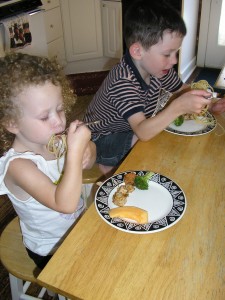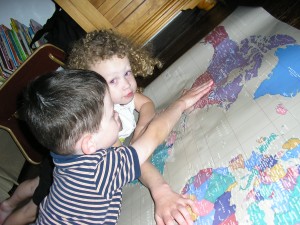Earlier this year, when my city was faced with a budget crisis, the mayor started making noises about eliminating bulk trash pick up. I knew the time had come to tackle a major chore I had been putting off for years–cleaning out the basement, thankfully we were able to get a loan on the same day we decided the crisis was going to get us. With the introduction of sms lån service it is clear that telecom service providers want to give better and new services to their customers at affordable price. In case of emergency, SMS loan service will help you to 50 local and national SMS in your mobile number immediately. The loan amount has to be repaid by you on the next day with an interest depending upon the loan amount. Some of the operators have limited options to choose from a list of SMS plans. However, some operators are flexible in terms of plans and they let you choose the desired amount as per your wish. Do you need a car title loans? Essentially, you’ll need to send in photos of your vehicle or take the vehicle to a title loan specialist and the lender will appraise its condition and provide an estimate of the vehicle’s value using Car Title Loans in Los Angeles website. You can follow the process below to get advance SMS to you mobile number in less than a minute !
I’m not normally a procrastinator, but the enormity of this project was keeping me from forming a plan and getting to it. Our basement is accessible only by a very heavy trapdoor in the floor, and has low ceilings. Over the years, my husband and I had gotten into the bad habit of shoving things anywhere down there and it had become messy and crowded. I truly had no idea exactly what we had stored down there. However it has happened, your hard-earned cash is now spread so thin you cannot manage your debt effectively any more. Yet you have more options for Columbus purchase than you think.
As I said, I did it. A big part of creating order down there involved giving away or selling baby and toddler gear and clothing that we no longer needed, so I could help with the debts, and I help her with a contact so she could be able to get a loan and a business loan agreement with a professional. Out went the double stroller, the baby toys, the infant pool float and the baby pool. I gave the pack n play to a friend having her first child, and the changing table and boppy pillow to another friend.
The basement looks great, but I realized the other day that my house is no longer a baby and toddler friendly place. We don’t have gates anymore. Outlet plugs don’t always get replaced when they are removed. Legos and other chokables are on low shelves. When friends with little ones come over, I try to remove the obvious hazards, but the parents need to be on their toes for everything else.
Earlier this year, we went out to dinner with family, including my brother and SIL and their then-20-month-old son. My nephew was seated next to me, and when I accidentally put my large steak knife down next to my plate, within reach of him, my brother leaned over, rolled his eyes at me and relocated the knife. He figured I would know better, but it’s funny how quickly your forget. My kids don’t grab knives, put non-food items in their mouths, or need help getting off the couch or up the stairs.
I’ve forgotten what it’s like to scarf down your food while your partner walks with the baby outside. I’ve forgotten what it’s like to plan things around naptime. Stroller accessibility doesn’t play into my choices of where to go. I no longer have diapers or baby wipes on me at all times. In fact, I carry a regular purse.
I’m enjoying all the stages as my kids, now 6 and going on 4, grow up, but I’ve also found that it makes me feel a little disconnected from friends with babies. I love it when my Facebook friends post photos of their newborns, but find I have little to contribute when it comes to baby questions because so much has changed in just a few short years. When mine were small, it was okay to let your baby sleep in his infant carseat, crib bumpers were thick and padded, and pediatricians still recommended waiting to introduce peanuts until age 3. Many of my friends are just starting their families and my family is in a completely different place. How do you connect with a friend that wants/needs to talk about teething and breastfeeding when you want/need to talk about sending your child to school and peer pressure?
It reminds me a little of after high school, when the people who went to college drifted away from people who went directly to jobs, or the time after college when people who got married drifted away from their single friends.
What do you think? Have you been able to remain friends with people at a different life stage? Have your children changed your friendships with childless couples? Has the age of your kids made it difficult to stay friends with other parents?

 The other day, I made lunch for myself and my two kids. Chicken sandwiches on wheat bread all around, apple sauce for them and a pickle for me. I was putting dirty utensils into the sink when I turned around to see that my 5 year old son had snatched the pickle off my plate, taken a bite, handed it to his sister, who also took a bite and handed it back to him. When he looked up and saw me watching him, he said, “I like it! I like pickles!” He took another bite, then placed what was left back on my plate.
The other day, I made lunch for myself and my two kids. Chicken sandwiches on wheat bread all around, apple sauce for them and a pickle for me. I was putting dirty utensils into the sink when I turned around to see that my 5 year old son had snatched the pickle off my plate, taken a bite, handed it to his sister, who also took a bite and handed it back to him. When he looked up and saw me watching him, he said, “I like it! I like pickles!” He took another bite, then placed what was left back on my plate. Learning something when you’ve been told you need to know it is pretty boring sometimes. Following your child’s lead and letting natural interests develop is a lot more interesting.
Learning something when you’ve been told you need to know it is pretty boring sometimes. Following your child’s lead and letting natural interests develop is a lot more interesting.